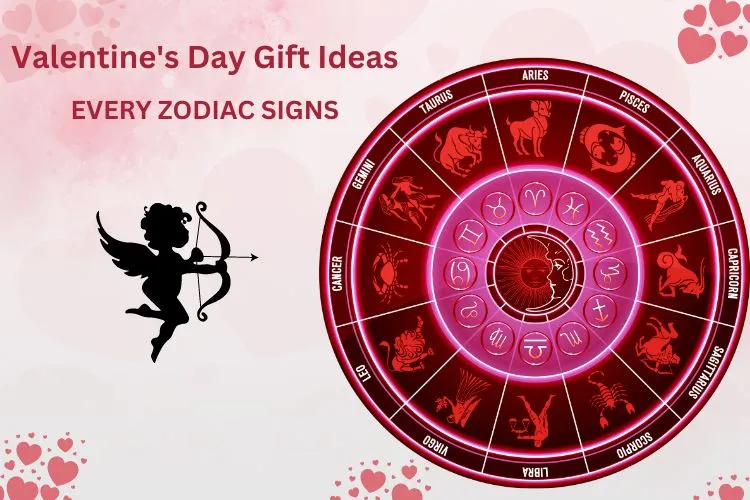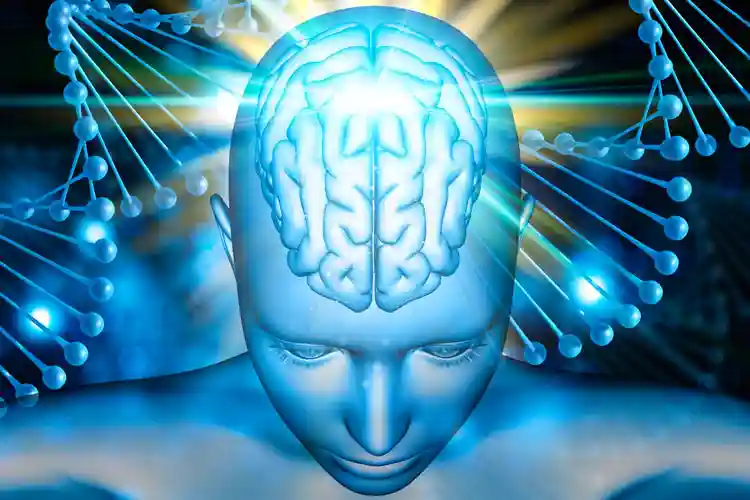Lord Shiva’s Characteristics and Stories
Hey pals, today we will be talking about the Great Lord Shiva. He is one of those, who needs no introduction as the world starts and ends with his name. But don’t make him angry, as he is a destroyer too. We know you are too curious to know about him. From Lord Shiva drinking Poison story to his mysterious tales. So without any ado, let’s start reading.
Lord Shiva drinking poison story
The Samudra Manthana (Sanskrit: समुद्रमन्थन, lit. the churning of the ocean of milk) is one of the most well-known episodes in Hindu philosophy, as told in the Bhagavata Purana, Mahabharata, and Vishnu Purana. The Samudra Manthana describes Amrita’s history.
The origins of the word
• Sgara manthana (सागरमन्थन) – Sgara is another term for Samudra, both of which refer to a sea or large body of water.
• Kshirasgara manthana (क्षीरसागरमन्थन) – Kshirasgara is a Sanskrit term that means “ocean of milk.” Kshirasgara is made up of two words: kshira (milk) and sgara (ocean or sea).
Legendary
The Ocean of Milk churning in a bazaar art print from the 1910s; the Suras, or gods, are on the right, and the Asuras, or demons, are on the left.
While riding the elephant Airavata, Indra, the King of Swarga, came across Sage Durvasa, who gave him a special garland given to him by a nymph. As a test to show that he wasn’t an egoistic deva, Indra accepted the gift and put it on the elephant’s trunk. Some bees were drawn to it because of the fragrance of the flowers. Airavata dropped the garland on the ground, enraged by the bees. The sage was enraged because the garland was a Sri (fortune) dwelling and was to be regarded as a Prasada or religious offering. Indra and all devas were cursed by Durvasa to be devoid of all power, energy, and fortune.
The Devas were defeated in battles that followed the event, and the Asuras, led by Bali, took possession of the universe. The Devas sought Lord Vishnu’s assistance, and he instructed them to approach the Asuras diplomatically. The Devas and the Asuras formed an alliance to churn the ocean together for the nectar of immortality and share it among themselves. Vishnu, on the other hand, advised the Devas that he would arrange for them to receive the nectar on their own.
The Ocean of Milk was churned over a long period of time, with Mount Mandara serving as the churning rod and Vasuki, a ngarja who resides on Shiva’s leg, serving as the churning cord.
Several items were released from the Ocean of Milk as a result of the Samudra Manthan operation. The deadly poison known as Halahala was one of them. In some versions of the tale, however, the poison leaked from the serpent king’s mouth as the demons and gods churned. The gods and demons were afraid because the poison was so potent that it could wipe out all of life. Lord Vishnu realised that when Vasuki was twisted and pulled, she would vomit poisonous fire, so he told the Devas to keep the tail end of the snake without explaining why. The Devas were in charge of the snake’s head, while the Asuras were in charge of the tail. Since the lower part of an animal is impure, or less pure, than the part that includes the head, the Asuras were enraged. They insisted on keeping the snake’s head hand. Lord Vishnu had a sneaking suspicion that his ruse would succeed. The Asuras requested to hold the snake’s head, while the Devas, on Lord Vishnu’s advice, decided to hold the snake’s tail. The mountain started to collapse as soon as it was dropped into the sea. Vishnu came to their aid in the form of Kurma (lit. turtle) and supported the mountain on his shell. The fumes produced by Vasuki poisoned the Asuras. Despite this, the Devas and Asuras alternately pulled back and forth on the snake’s body, causing the mountain to spin and the ocean to churn.
The Devas then sought safety from Lord Shiva. Shiva ingested the poison to defend the three realms, turning his throat blue in the process. In some stories, Lord Shiva was in excruciating pain as he drank the poison, but he could not die, as shown by Parvati, his consort. She puts her hand on his throat right away, preventing the poison from flowing any more, and Maya stops it for good. As a result, his throat turned blue, and he was dubbed Neelakantha (the blue-throated one; in Sanskrit, “neela” means “blue” and “kantha” means “throat”).
All kinds of herbs were thrown into the sea, yielding fourteen Ratnas (gems or treasures) that were split between the Asuras and the Devas. Though the Ratnas are usually counted as 14, the scriptures list between 9 and 14 Ratnas. They were accepted by Shiva (due to the poison consumed), Vishnu, Maha Rishis (for Kamadhenu or Surabhi, which was provided by Vishnu), the Devas, and the Asuras, depending on the quality of the treasures created.
Fill Treasures In Your Life
Consult an Astrologer
Sagar Manthan's Story
All kinds of herbs were thrown into the sea, yielding fourteen Ratnas (gems or treasures) that were split between the Asuras and the Devas. Though the Ratnas are usually counted as 14, the scriptures list between 9 and 14 Ratnas. They were accepted by Shiva (due to the poison consumed), Vishnu, Maha Rishis (for Kamadhenu or Surabhi, which was provided by Vishnu), the Devas, and the Asuras, depending on the quality of the treasures created. There were three forms of Goddesses that rose from the sea, according to most lists:
• Lakshmi: Fortune and Wealth Devi, who embraced Vishnu as Her eternal consort.
• Apsaras: Numerous holy nymphs who chose the Gandharvas as their companions, such as Rambha, Menaka, Punjisthala, and others.
• Varuni: Taken by the Asuras, although reluctantly (she seemed dishevelled and argumentative).
In the same way, three different forms of supernatural animals appeared:
• Kamadhenu or Surabhi (Sanskrit: kmadhuk): Brahma took the wish-granting cow and gave it to the sages so that the ghee from her milk could be used in Yajna and other rituals.
• Indra captured Airavata and many other elephants.
• Uchhaishravas: Bali was given the divine seven-headed horse Uchhaishravas.
There were also three valuables produced:
• Kaustubha: the world’s most precious ratnam (divine jewel), which Vishnu wears.
• Parijata: The holy flowering tree whose blossoms never fade or wilt, which the Devas brought to Indraloka.
• Lord Vishnu was given the strong bow Sharanga.
The following was also produced:
• Chandra: Shiva’s head was crowned with a moon.
• Dhanvantari: The “Vaidya of the Devas” with Amrita, the nectar of immortality. (At times, two separate Ratnas are considered.)
• Halahala: The poison swallowed by Shiva.
This list differs slightly from Purana to Purana, as well as in the Ramayana and Mahabharata. The following Ratna is added to lists to complete them:
Shankha is the conch of Vishnu.
Alaxmi (Jyestha): the goddess of misfortune
Varuna was the one who took the umbrella.
Aditi’s earrings, which were given to her by her son Indra.
Kalpavriksha: a sacred tree that grants wishes
Nidra (sleep)
The devatas and one Asura such as raahu and ketu swallowed Amrit.
The Final Ratna
Finally, Dhanvantari, the celestial physician, appeared, holding a jar containing amta, the immortality nectar. For it, the Devas and the Asuras engaged in fierce war. Garuda took the pot and flew away from the battlefield to defend it from the Asuras.
The Devas prayed to Vishnu, who assumed the form of Mohini and distracted the Asuras by acting as a lovely and enticing damsel in distress; she then took the amta and distributed it among the Devas, who drank it. Svarbhanu, an Asura, disguised himself as a deva and drank nectar. The Sun god Surya and the Moon god Chandra also recognised the mask because of their luminous appearance. They told Mohini, who cut off Asura’s head with her discus, the Sudarshana Chakra, before the nectar could pass through his throat. His head was given the name Rahu, and his body was given the name Ketu, all of which later became planets. The Asuras were vanquished by the rejuvenated Devas at the end of the story.
Be an Undefeated Champion in Your Career through Astrology, Ask the Experts Now!
The Kumbh Mela History
The Devas were bringing the amta away from the Asuras, some drops of the nectar dropped at four separate locations on Earth: Haridwar, Prayaga (Prayagraj), Trimbak (Nashik), and Ujjain, according to mediaeval Hindu theology. According to folklore, these locations have magical influence and spiritual significance. For this reason, a Kumbha Mela is held every twelve years in these four locations. People believe that bathing there during the Kumbha Mela would provide them with moksha. While the Samudra Manthan legend is mentioned in several ancient texts, including the Puranas, none of them mentions the amta spilling at four locations. These texts also make no mention of the Kumbha Mela. Therefore, multiple scholars, including R. B. Bhattacharya, D. P. Dubey and Kama Maclean believe that the Samudra Manthan legend has been applied to the Kumbha Mela relatively recently, in order to show scriptural authority for the Mela.
Hence, we can say that by just bathing in the holy water of Kumbh Mela, people can reach a state of Moksha after the death and also, they can vanish their bad Karmas. Ultimately, kickstarting a new life.
Reads Also This Article: Shiva and Vishnu in Adhika Maas in Sawan Maas in Three Years
Characteristics of Shiva
Lord Shiva’s image has been romanticised for centuries by historians and devotees alike. A tiger skin, a crescent moon, a snake around the throat, the third eye, matted hair, river Ganga flowing from the hair, a trident in one hand, a dumroo in the other, a trident in one hand.
To fully comprehend Shiva, it is necessary to recognise that he is not constrained by the three factors of name, form, and time. Shiva is above all, a person who sits in a position or in the sky.
What is Shiva’s significance?
Shiva is Sha + ee + ee + ee + ee + ee Va
Sha stands for Shareeram, which means body, and ee stands for eeshwari, which means life-giving energy.
Va stands for vayu, which means motion.
Shiva thus reflects the living, moving body.
Shiva is reduced to sha+va = shava when the ‘ee’ is removed.
Shava is a word that refers to a lifeless body. Shiva has the capacity for survival, while Shava is devoid of it.
Shiva is life, Shiva is the potential for life, Shiva is all-encompassing – the universal soul or consciousness, which takes us to a deeper understanding. Ananda, or bliss, is achieved by recognising this Shiva Tattva.
Eleven different ways to communicate with Lord Shiva
Lord Shiva has been worshipped by people of all faiths for thousands of years. Shiva’s many virtues are impossible to explain or put into terms. Our sacred Vedas and Puranas refer to Shiva as a God who can be easily impressed by the name “Ashutosh,” which means that pleasing Shiva is simple for any pilgrim, and even demons have been known to impress Shiva in prehistoric times.
The Eleven Specific Ways to Communicate with Shiva to Become a True Devote for Life are described below.
1. Clear your mind of all clutter and become as pure as fire – Keep in mind that your mind does not influence you or your actions. You should be able to control your thoughts. The universe is ruled by a balanced mind with optimistic thinking, and all other senses are under complete control.
2. Chant Om Namah Shiva- Begin with a regular practise of 108 repetitions of the mantra and work your way up to multiples of 216,432 and beyond.
3. Visit Shiva temple often- Go to Shiva temple every day, spend some time there, and soak up the positive energies.
4. Lord Shiva’s Monday Fast- Fasting aids in the cleansing of our bodies. Recite the mantra “Rudrashtakam” to help you tackle obstacles in your everyday life.
5. Listen to “Shiv Katha” – Listening to “Shiv Katha” or stories set during the 16 Monday fast will help you build trust, inner power, and achievement.
6. Put on Mahadev’s “Rudraksha” eyes to see the universe from the creator’s eyes – Wearing a Rudraksha mala will bring you closer to Shiva and help you become a true devotee.
7. Give wine, Bilvapatra, and flowers to Lord Shiva in order for Shiva to reward you and bring you riches.
8. The Kailash Mansarovar Yatra is the greatest journey to please Lord Shiva, as it involves visits to Jyotirlingas and holy places connected with Shiva.
9. Read the Shiva Purana or Shiva Gita to recall Mahadev’s teachings and apply them to your life in order to attain absolute liberation.
10. Chant the Shiva Sahasranama- Once, Lord Vishnu wanted to please Shiva, so he chanted the Sahasranama and donated his eyes to Mahadev. Shiva was so happy that he was awarded the “Sudarshana Chakra.”
It is said that anyone who worships Shiva with the purity of mind and dedication will never suffer, even in their dreams. Shiva will protect you from all damage.
Save Your Self From Any damages in Life, Get Your FreeJanmaptri Now!
Lord Shiva's Life Conviction
To see Mahadeva sitting in Kailash by going there directly requires intense ascetic force. Even the various classes of Munis, Gods, and Siddhas are incapable of doing so, so what can be said of modern Humans? Only the most exalted of beings, Nara-Narayana, will see him seated there, according to the Mahabharata. In this chapter of the Mahabharata’s Udyoga Parva, Garuda explains Kailash as follows:
“O Brahmanas, since this quarter saves from sin and one attains salvation here, it is called the north for this saying (Uttarana) strength,” Garuda said (uttara). And, since the abode of all the treasures of the north extends in a line to the east and west, the north is often referred to as the central zone, O Galava (madhyama). And, O bull among the twice-born, no one who is unamiable, full of unbridled desires, or unrighteous can live in this region that is superior to all. Here, in the asylum known as Vadari, live Krishna, who is Narayana’s self, Jishnu, the most exalted of all male beings, and Brahman for all eternity (the Creator). Maheswara, endued with the effulgence of the fire that blazeth up at the end of the Yuga, still resides on the breast of Himavat. He is dressed as Purusha here with Prakriti (the universal mother).
He cannot be seen by the different groups of Munis, the gods with Vasava at their faces, the Gandharvas, the Yakshas, and the Siddhas, except by Nara and Narayana. Despite being invested with Maya, he can only be seen by the eternal Vishnu, who has a thousand heads and thousand legs. Chandramas (the moon) was named as the regenerate order’s supreme ruler in this area. Mahadeva first received her on his head in this field, O thou most familiar with Brahma, and then let (the sacred stream) Ganga fall from the heavens. It was here that the Goddess (Uma) went through her ascetic penances in order to receive Maheswara (as her Lord). The Kama, Siva’s wrath, Himavat, and Uma all shone brilliantly in this area.
As a result, it is impossible to actually go to Kailash and see Mahadeva there. However, if one practises devotion, Lord Shiva’s energies will be visible.






